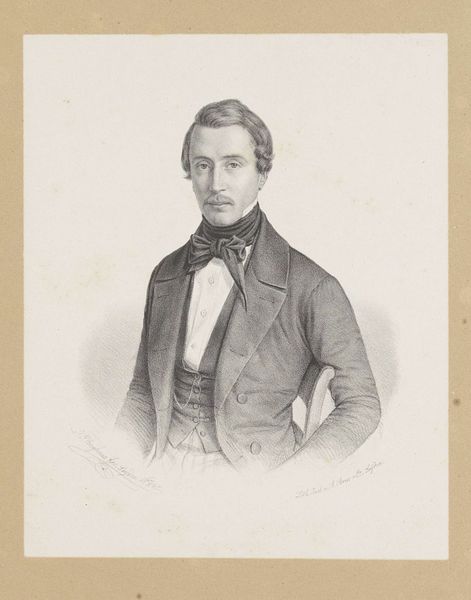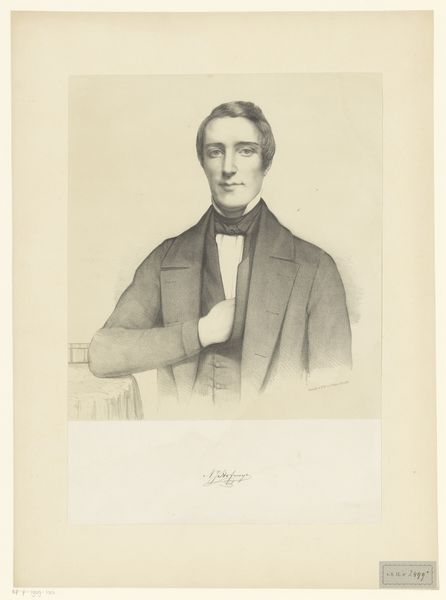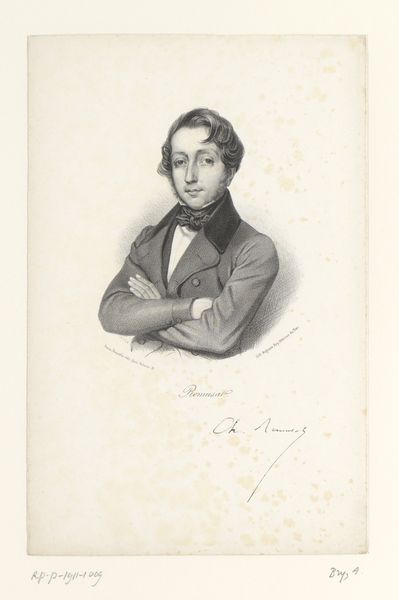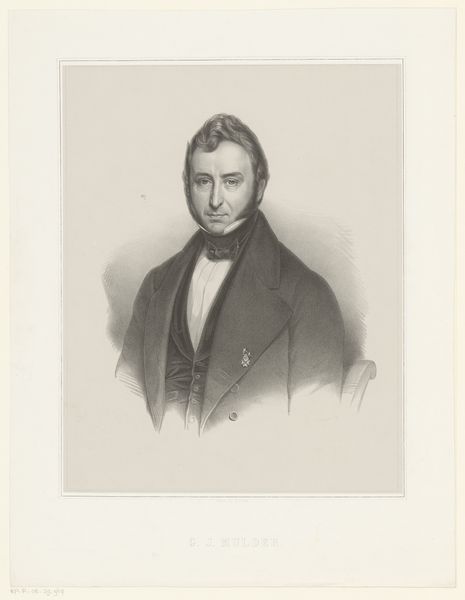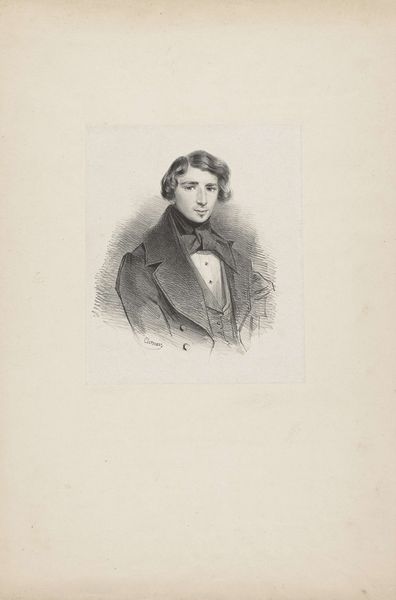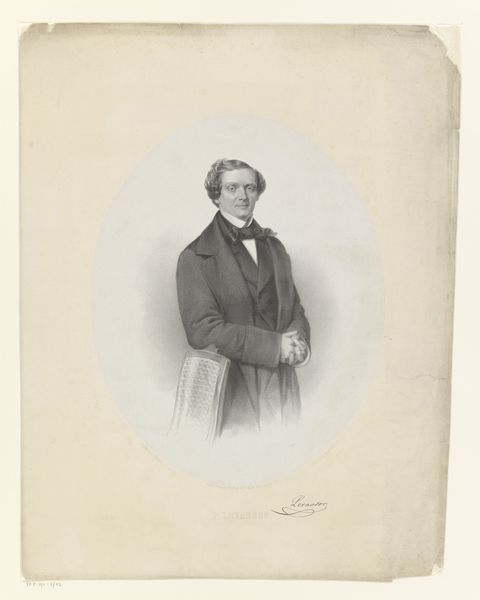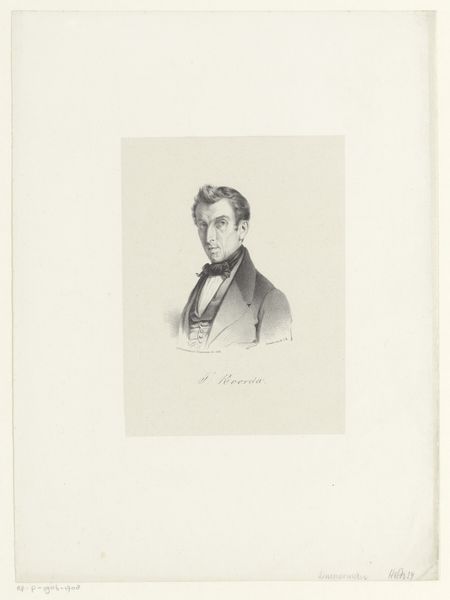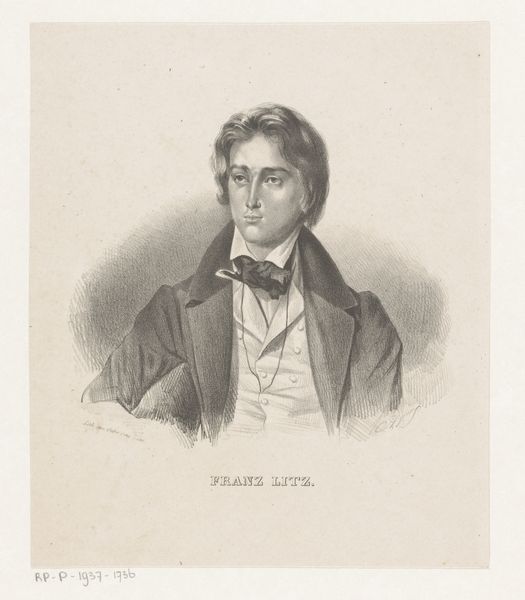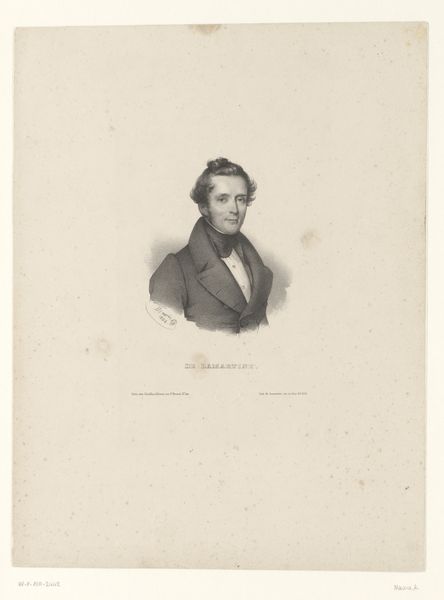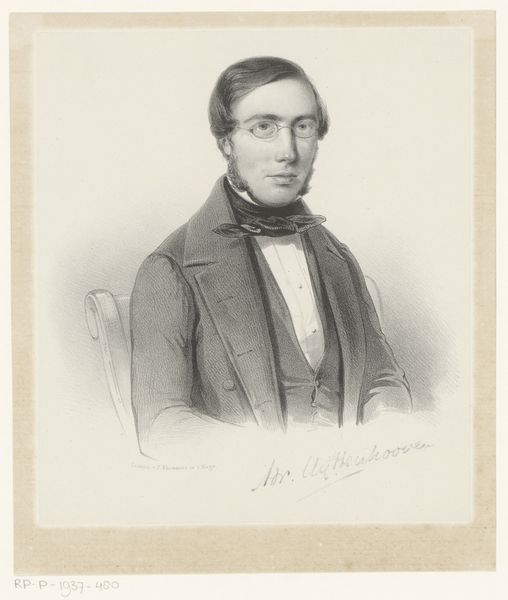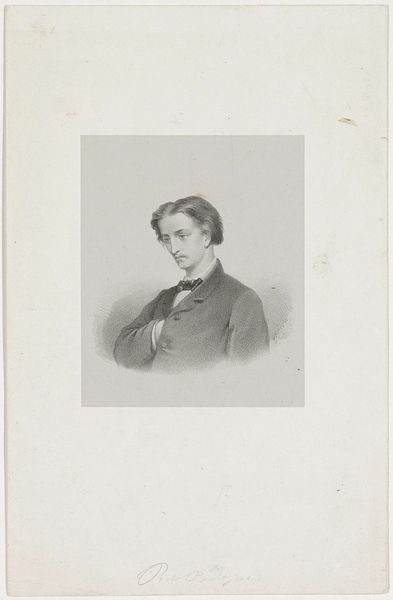
drawing, pencil
#
portrait
#
pencil drawn
#
drawing
#
pencil sketch
#
pencil drawing
#
romanticism
#
pencil
#
portrait drawing
#
academic-art
Dimensions: height 360 mm, width 274 mm
Copyright: Rijks Museum: Open Domain
This is a print of Jean Zuléma Amussat by Zéphirin Belliard. Without a specific date, we might consider this portrait through the lens of 19th-century institutions of science and medicine. In France during this period, medicine was undergoing rapid professionalization. The rise of the clinic, medical journals, and public health initiatives created a culture of scrutiny and accountability. A portrait like this one speaks to the subject's status within this evolving field. How does the image create meaning? Amussat is shown in formal attire, a visual signifier of his professional standing. The print medium also implies a certain accessibility, as prints were more easily reproduced and distributed than paintings. Was this image intended for a medical publication, or perhaps for display in a hospital or clinic? To truly understand its place in history, we might consult medical archives, biographical records, and studies of the medical profession in 19th-century France. This reveals how art becomes meaningful within specific social and institutional contexts.
Comments
No comments
Be the first to comment and join the conversation on the ultimate creative platform.
